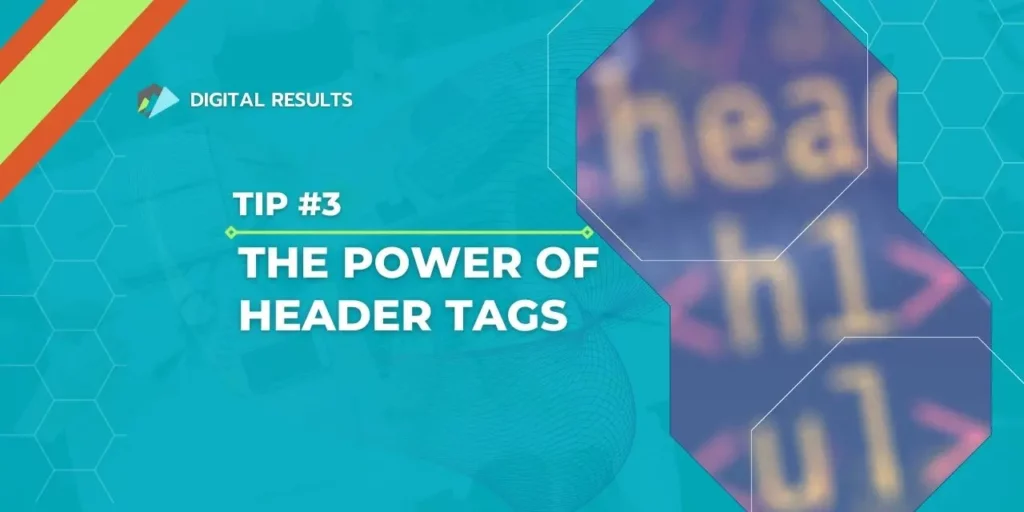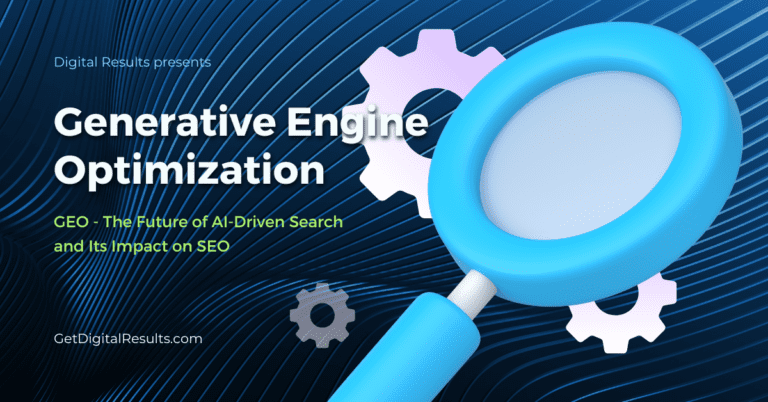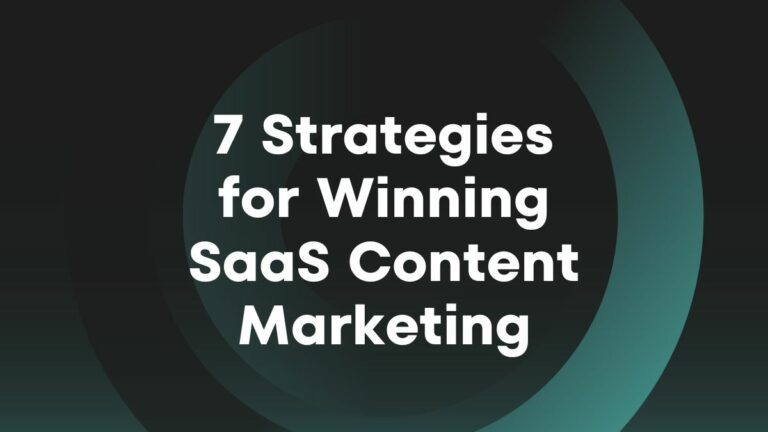
The Power of Header Tags: Organize Your Content and Boost Your SEO
As business owners, you know that creating quality content is essential for engaging your audience and driving traffic to your website. But did you know how your content structure can impact your website’s search engine rankings?
That’s where header tags come in. We’ll introduce you to the benefits header tags offer, show how they improve your page’s search engine rankings, and provide an example of best practices for their use.
What are Header Tags?
Before diving into header tags’ benefits, let’s first define what they are. Header tags (or hierarchy tags) are HTML tags used to structure the content of a web page. There are six levels of hierchy tags, with H1 being the most important and H6 being the least important.
The H1 tag is typically used for the page’s main heading, while the H2 tag is used for subheadings, and so on. Header tags can help organize your content and make it easier to read by both humans and search engines.
Benefits of Using Header Tags
Using header tags in your content strategy will increase both user engagement and search engine rankings. Here are a few of the most significant:
1. Organization
Hierarchy tags can help organize your content and make it easier for readers to scan and digest. By breaking up your content into sections with clear headings, you’re making it easier for your readers to find the information they want quickly.
2. Readability
Using header tags can also improve the readability of your content. When readers can quickly scan your content and find the information they need, they’re more likely to stay on your website longer and engage with your content.
3. Accessibility
Header tags can also improve the accessibility of your content. Hierchy tags can provide a clear structure for understanding the content for users with screen readers or other assistive technologies.

4. SEO
Perhaps the most significant benefit of using header tags is their impact on your website’s search engine (SEO) rankings. When search engines crawl your website, they use hierarchy tags to make sense of the structure and organization of your content.
Tailoring your site’s header tags to the content of each page can help search engines like Google better understand which parts are most important. This makes it more likely that they’ll rank your site higher in their results pages (SERPs) and drive more traffic to you.
Using Header Tags for SEO
Now that we’ve covered the benefits of using header tags, let’s dive deeper into how to use them strategically for search engine optimization (SEO).
1. Use H1 Tags for Main Headings
The H1 tag should always be used for the main heading of your page. This helps search engines understand the topic of your content and its relevance to a particular search query. We recommend that only one H1 appear on any given page.
2. Use H2 Tags for Subheadings
Subheadings are a great way to break up your content into digestible sections. Use H2 tags for your subheadings to clarify to readers and search engines which sections are most important.
3. Use H3 Tags for Sub-Subheadings
If you have subheadings within your subheadings, use H3 tags to help organize the content further. This makes it easier for readers to navigate and understand your content.

4. Avoid Overusing Header Tags
While header tags can benefit SEO, it’s important not to overuse them. Using too many hierarchy tags on a single page may make it look spammy, which could hurt your SEO.
5. Don’t Use Header Tags Solely for Styling
It’s essential to remember that header tags are primarily used to structure content and make it easier to read and understand. Don’t use hierarchy tags solely for styling, as this can confuse search engines and hurt your SEO.
6. Include Your Target Keywords
To ensure that search engines can identify your content; it’s crucial for keyword-based headers to appear in your page headings. This helps search engines understand the relevance of your content to specific search queries and can help improve your ranking in SERPs.
However, it’s essential to use keywords strategically and not overdo them. Keyword stuffing can harm your SEO if done incorrectly (putting too many keywords in a header tag is an example), so make sure yours are used naturally within the content—not just at the beginning.
How to Properly Implement Header Tags
Now that you understand how vital header tags are to search engine optimization, let’s look at how they can be used effectively in a content strategy.
1. Start with a Plan
Before creating content, it’s important to have a plan for how you’ll use header tags. This will help you ensure you’re using H tags effectively and not overdoing it. The most important header tag content strategy guideline is to know your audience. Before writing anything, take the time to get familiar with who your readers are and what they’re interested in. This means researching their demographics, where they live, how old they are, etc., and reading other publications that cater to this same audience. Then think about the structure of your content and how you can break it up into clear sections with descriptive headings.
2. Use Consistent Formatting
Using consistent formatting is crucial for making your content easy to read and understand. Ensure your H tags are consistent in size and style, and use a similar format throughout your website.
3. Optimize for Mobile
With most internet users browsing on mobile devices, optimizing your header tags for mobile is essential. Make sure that your headers are easily readable on small screens and don’t take up too much space.
4. Use Tools and Resources
Several tools and resources are available to help you optimize your header tags for SEO. These include SEO plugins for your content management system, header tag analyzers, and keyword research tools.

Hierarchy Tag FAQs
Additional Tips for Maximizing the Effectiveness of Header Tags
We have a few additional tips for making the most of header tags in your content strategy:
1. Use Header Tags in Combination with Other SEO Tactics
While header tags can help improve your website’s SEO, they’re just one piece of the puzzle. To maximize your website’s search engine rankings, you should also focus on SEO tactics such as keyword research, great content, and link building.
2. Test and Measure Your Results
As with any SEO tactic, it’s important to test and measure your results to see what’s working and what’s not. Use tools like Google Analytics to track your website’s traffic and rankings and adjust your header tag strategy accordingly.

3. Stay Up-to-Date with SEO Best Practices
SEO best practices are constantly evolving, so staying up-to-date with the latest trends and techniques is important. Follow reputable SEO blogs like this one, and stay informed of any algorithm updates or changes in search engine rankings factors.
4. Prioritize User Experience
While it’s important to optimize your website for search engines, it’s equally important to prioritize the user experience. Make sure your content is engaging and easy to read and use header tags to make it easier for users to navigate and find the information they’re looking for.
Final Thoughts on Hierarchy Tags
Header or hierarchy tags are a simple yet powerful tool for improving your website’s SEO and making your content more readable and accessible. Using H tags strategically and following best practices, you can make your content more readable, accessible, and relevant to search engines. So start implementing hierarchy tags in your content strategy today, and see the results for yourself! Digital Results will gladly assist if you need help with header tags. Take advantage of our free 30-minute consultation; one of our SEO experts will be happy to walk you through the process.






